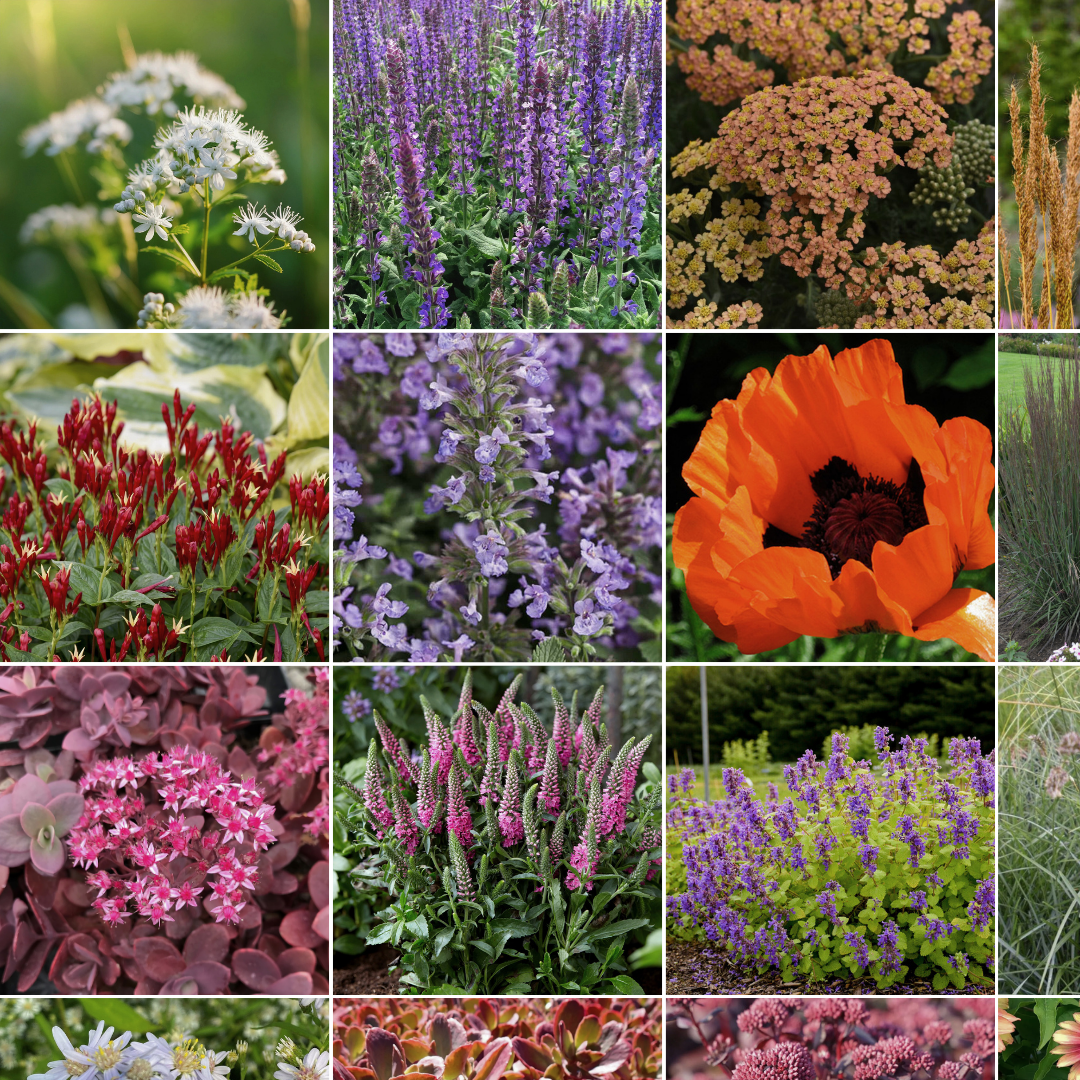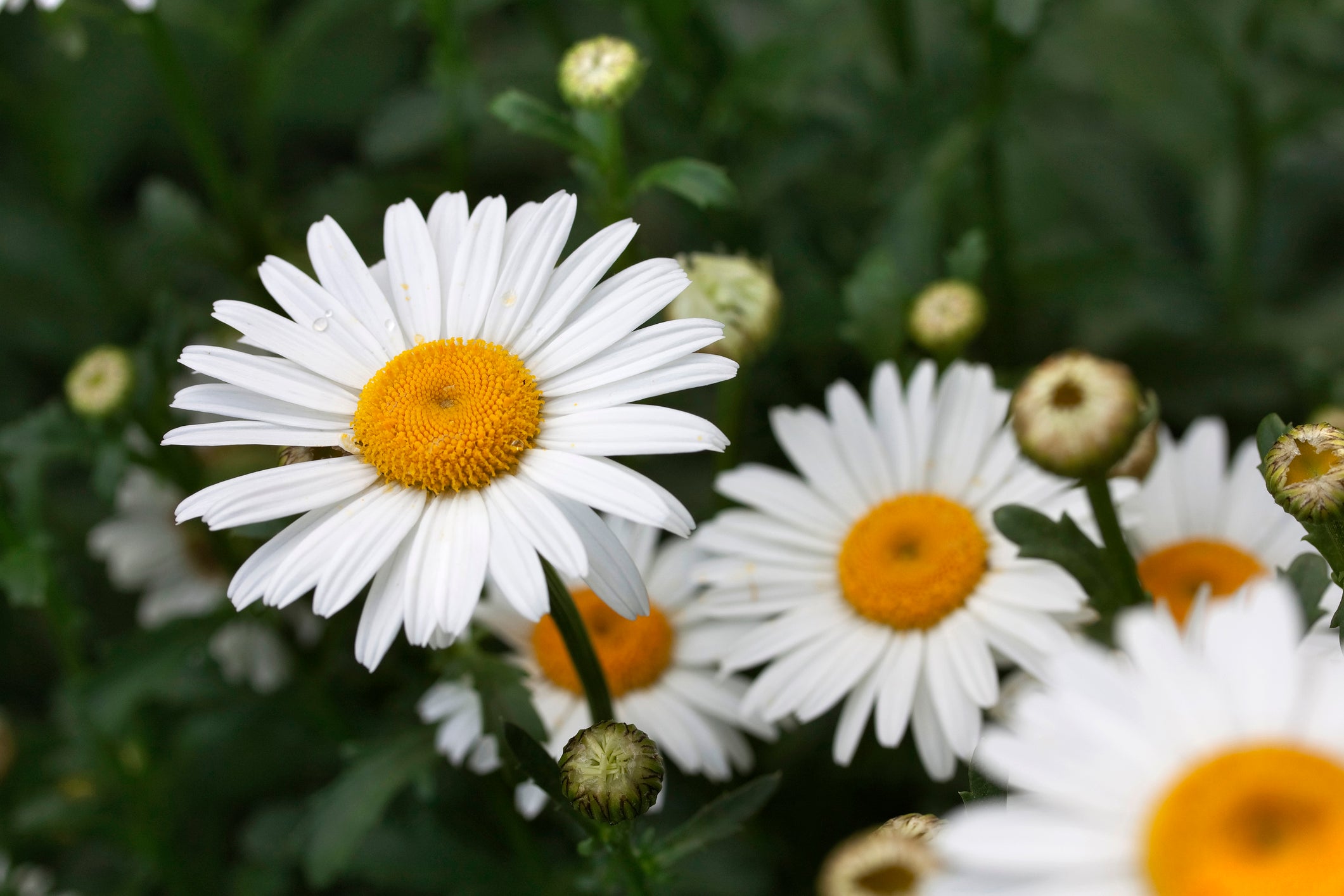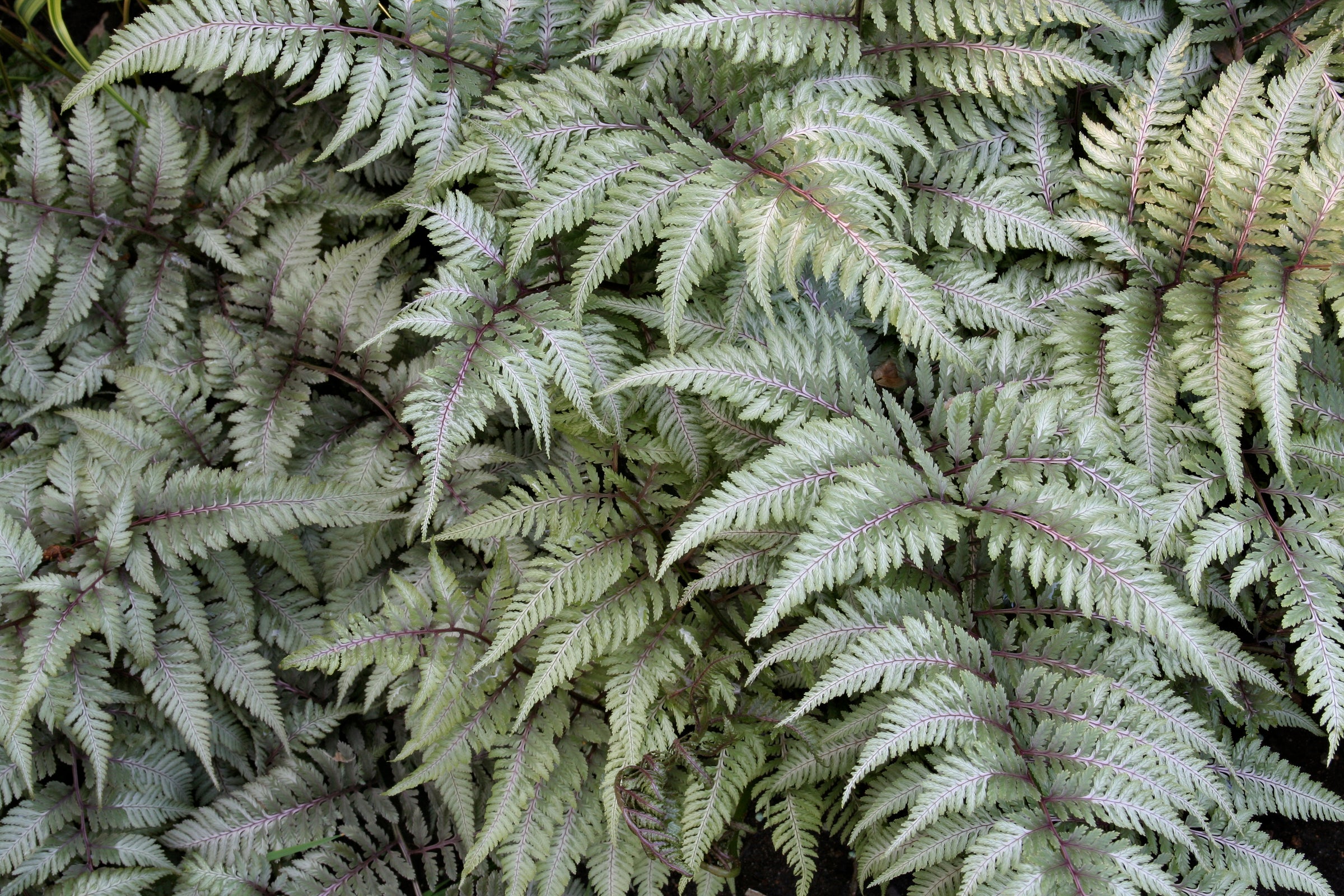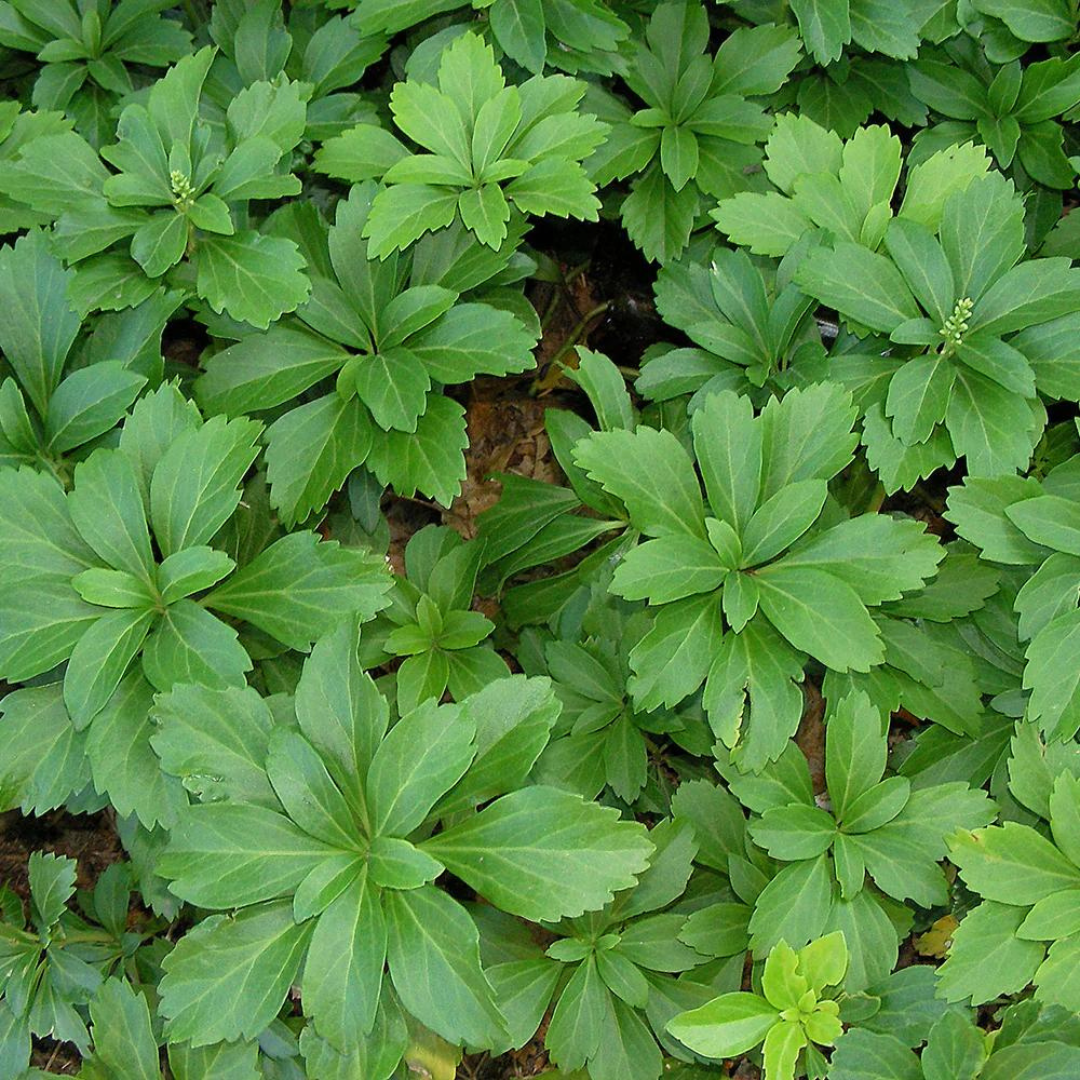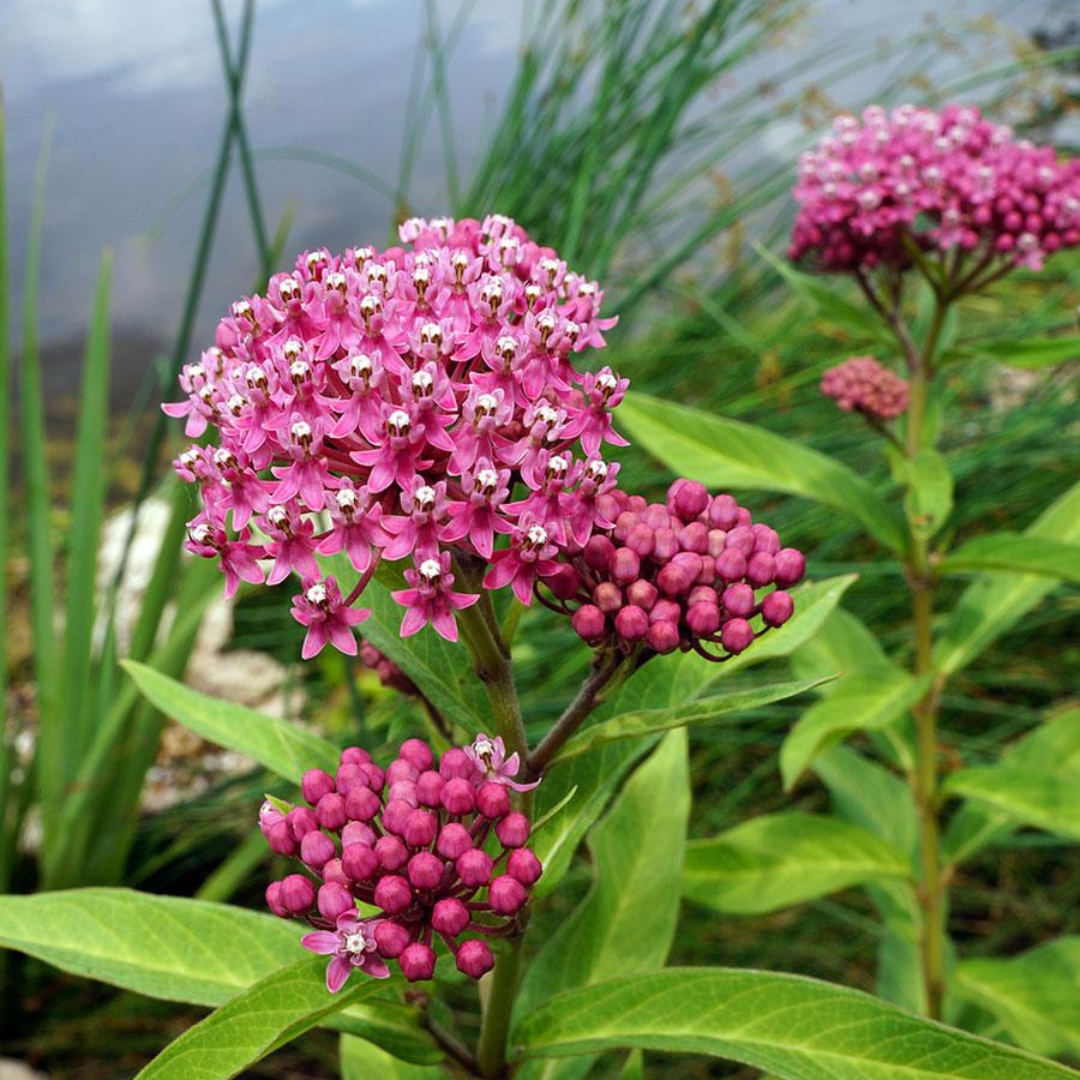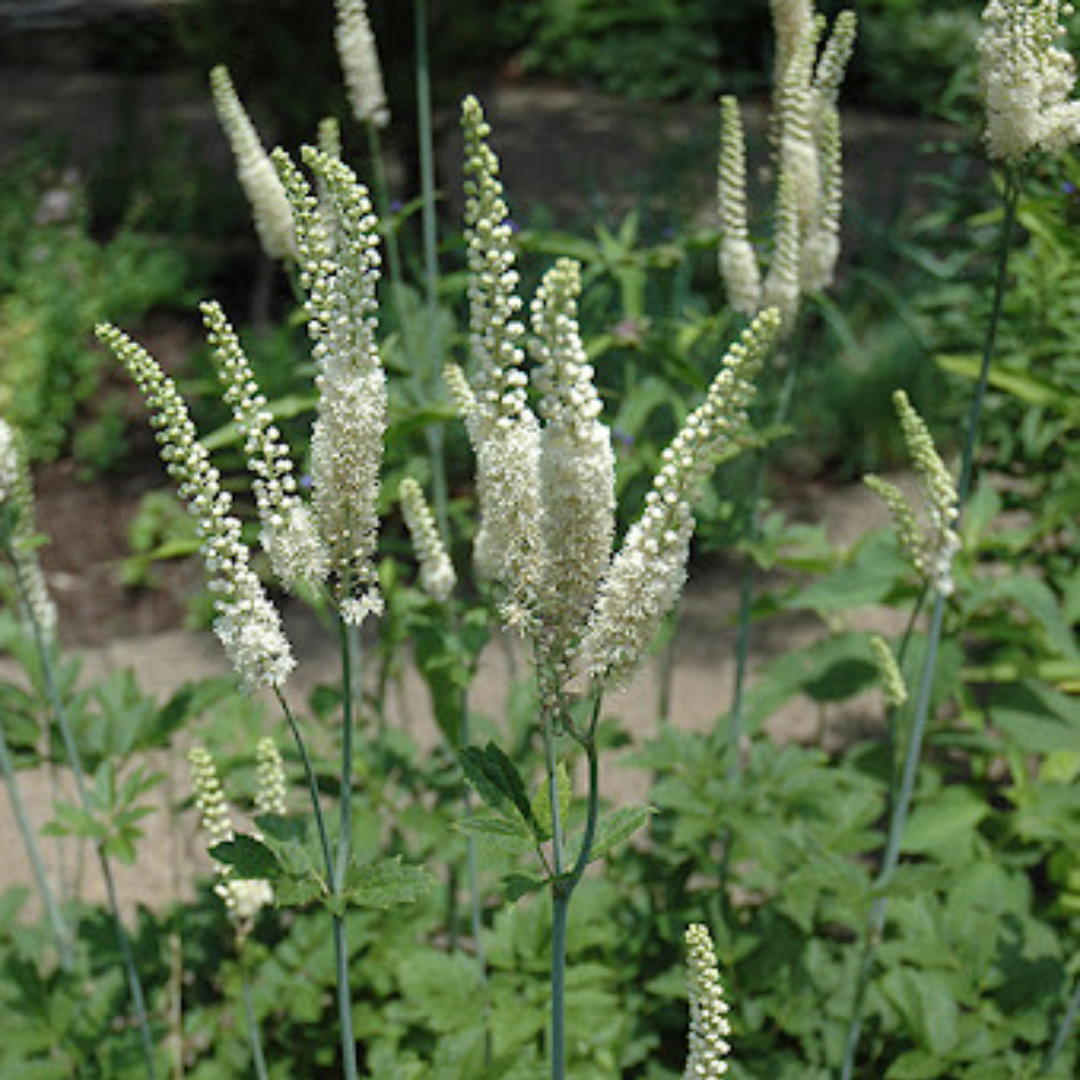
Cimicifuga racemosa
Add to Wishlist Partial Sun
Partial Sun
 Full Shade
Full Shade
 Deer Resistant
Deer Resistant
 Pollinator Friendly
Pollinator Friendly
 Native
Native
- In stock, ready to ship
- Backordered, shipping soon
Cimicifuga racemosa: Midnight Spires in Woodland Air
Cimicifuga racemosa, also known as black cohosh or black bugbane, rises with quiet power in the shade garden—its tall, elegant spires of fragrant white flowers held like candles above dark, deeply divided foliage. Blooming from midsummer into early autumn, these statuesque perennials add vertical drama and late-season light to woodland borders and part-shade beds. Native to eastern North America, Cimicifuga racemosa is not only beautiful, but ecologically significant—supporting native pollinators and contributing to layered, habitat-rich plantings with both form and function.
Plant Characteristics:
- Height: 120–180 cm in bloom
- Spread: 60–90 cm, forming a bold, clump-forming presence
- Flower Colour: Creamy white; fragrant, bottlebrush-like spires
- Flowering Period: Midsummer to early fall
- Foliage: Deep green to purplish-black, finely divided leaves with lacy texture
- Sunlight Requirements: Part shade to full shade; tolerates full sun with ample moisture
- Soil Requirements: Moist, humus-rich, well-drained soil; best in consistently damp conditions
Uses and Benefits: Cimicifuga racemosa adds height, fragrance, and movement to shaded gardens where vertical interest is often lacking. Its creamy flower plumes sway gently above the foliage, catching light and drawing pollinators like bees, hoverflies, and even butterflies. The aromatic blooms have a musky sweetness and can be used to attract beneficial insects while gently repelling some pests. It’s a standout in native, woodland, or shade-themed gardens, and its architectural form lends elegance to naturalistic designs.
Companion Plants: Pair Cimicifuga racemosa with Hosta 'Sagae', whose large, blue-green and gold-edged leaves provide a luminous contrast and a broad base beneath the upright floral spires. Add Astilbe 'Visions in Red', whose dusky plumes and bronzed foliage echo the plant’s darker tones and offer a midsummer prelude to the cohosh’s bloom. Introduce Dryopteris 'Male Fern', whose classic woodland form and finely cut fronds enhance the layered, native-style aesthetic and thrive in the same moist, shaded conditions. Together, these plants create a tapestry of bold form, subtle colour, and continuous seasonal interest.
Care Instructions: Plant in part to full shade in moist, organically enriched soil. Water consistently during dry periods—especially in sunnier locations. Avoid hot, dry sites. Cut back spent flower stems after bloom, or leave them for late-season interest. Divide clumps every 4–5 years in early spring to maintain vigor. Plants may take a season or two to establish and reach full height.
History: Cimicifuga racemosa has deep roots in both horticulture and herbal tradition. Indigenous peoples and early settlers used black cohosh medicinally for a range of ailments. Botanically, it was once grouped with Actaea, and modern taxonomy now often lists it as Actaea racemosa. However, the name Cimicifuga—from Latin cimex (bug) and fugare (to drive away)—reflects its historical use as a bug repellent. Today, it is cherished in gardens for its graceful presence and ecological value.
Final Thoughts: Cimicifuga racemosa is a shade garden’s exclamation point—rising like a plume of soft light through a sea of green. When paired with the grand leaves of Hosta 'Sagae', the moody richness of Astilbe 'Visions in Red', and the timeless texture of Dryopteris 'Male Fern', it forms the heart of a lush, layered, and seasonally dynamic planting. A deeply rooted native beauty for gardeners who seek elegance, fragrance, and structure in the dappled quiet of woodland spaces.


